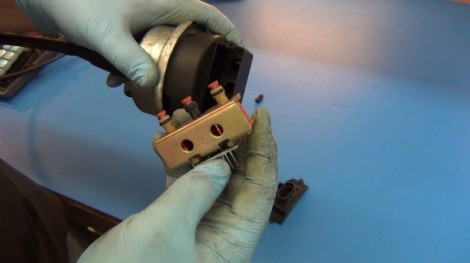
Travel backpacks are so passé. All the cool kids, like [Niklas Roy] are using scooter trunks for easy travel. Think of it, not only does it remove the need to carry your heavy baggage, but you get to coast along for the ride as well. We wonder what the officials at air, train, and bus travel hubs are going to think?
The idea came from seeing a similar build with a flight case (plywood box with metal edges and hardware). In that project the flight case folded out to be something of an impromptu street kiosk. But [Niklas] knew the aluminum camera trunk he uses for travel was going to work great in the project. He designed a bracket to replace the steering column on his kick scooter. It holds the case securely in place, but still allows the scooter to fold down to be stowed in the train overhead bin.
At first we thought this would have been better if integrated into the trunk itself. Keeping the two parts separate means you can leave the case wherever you’re staying and take just the scooter for day trips.
















